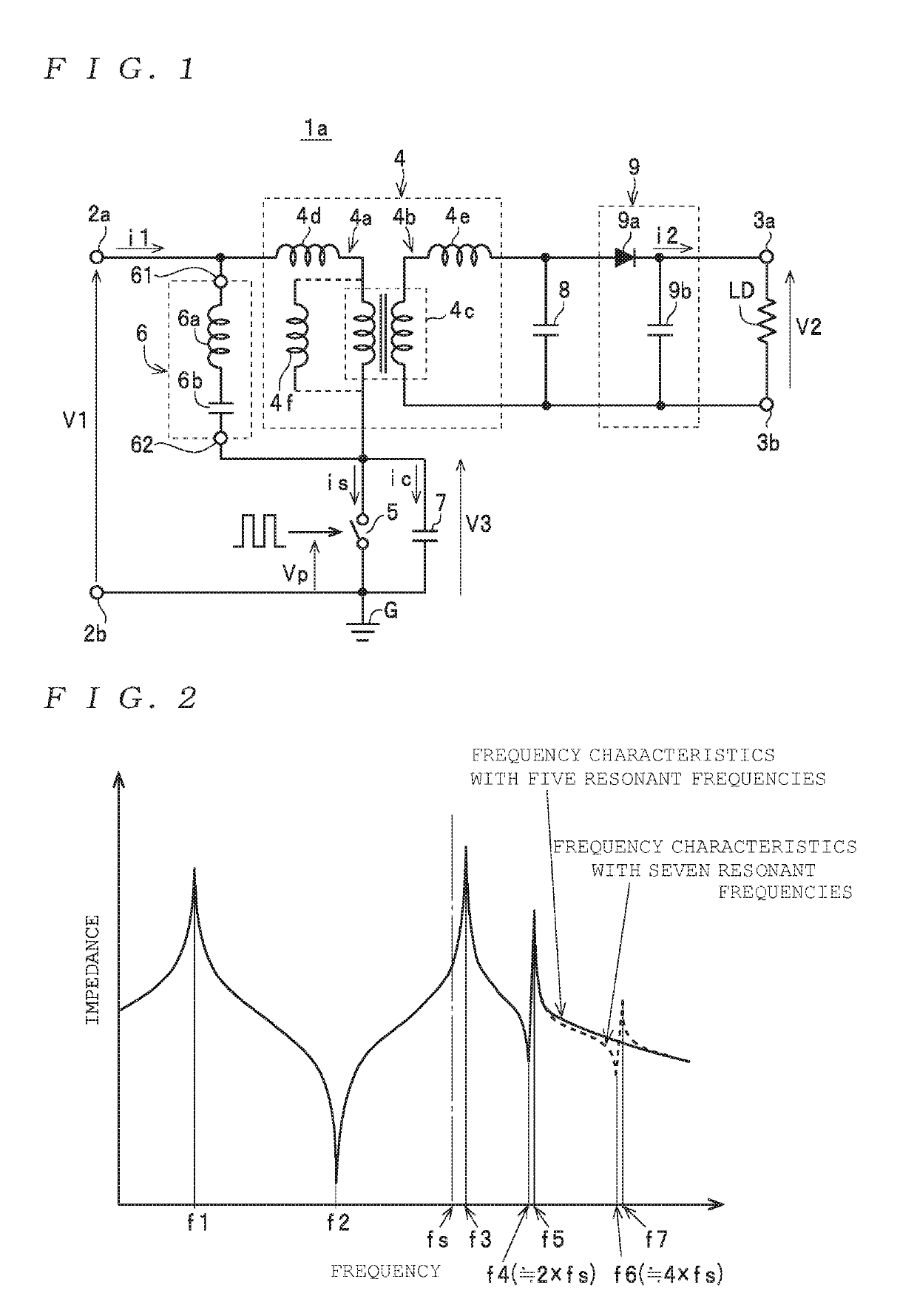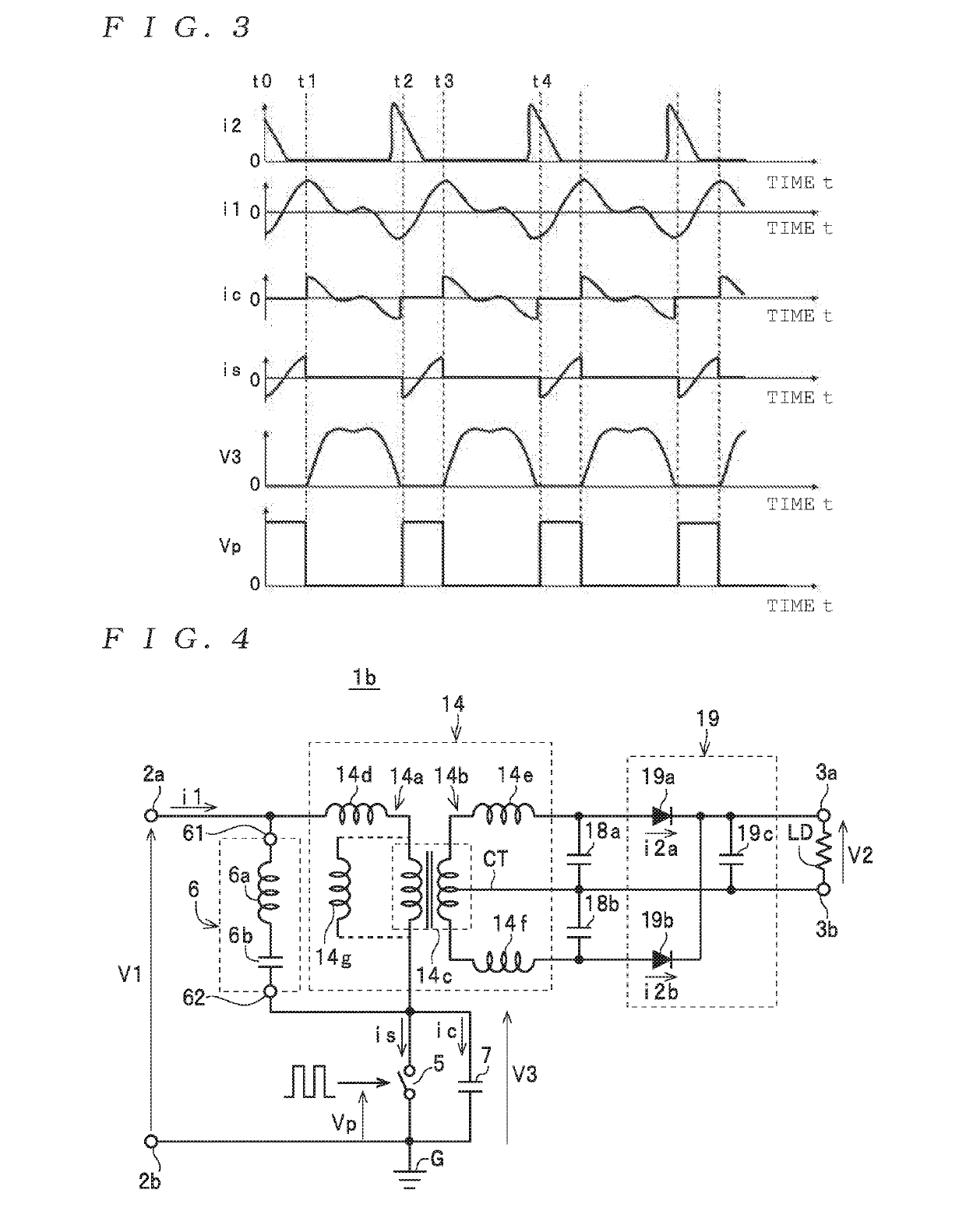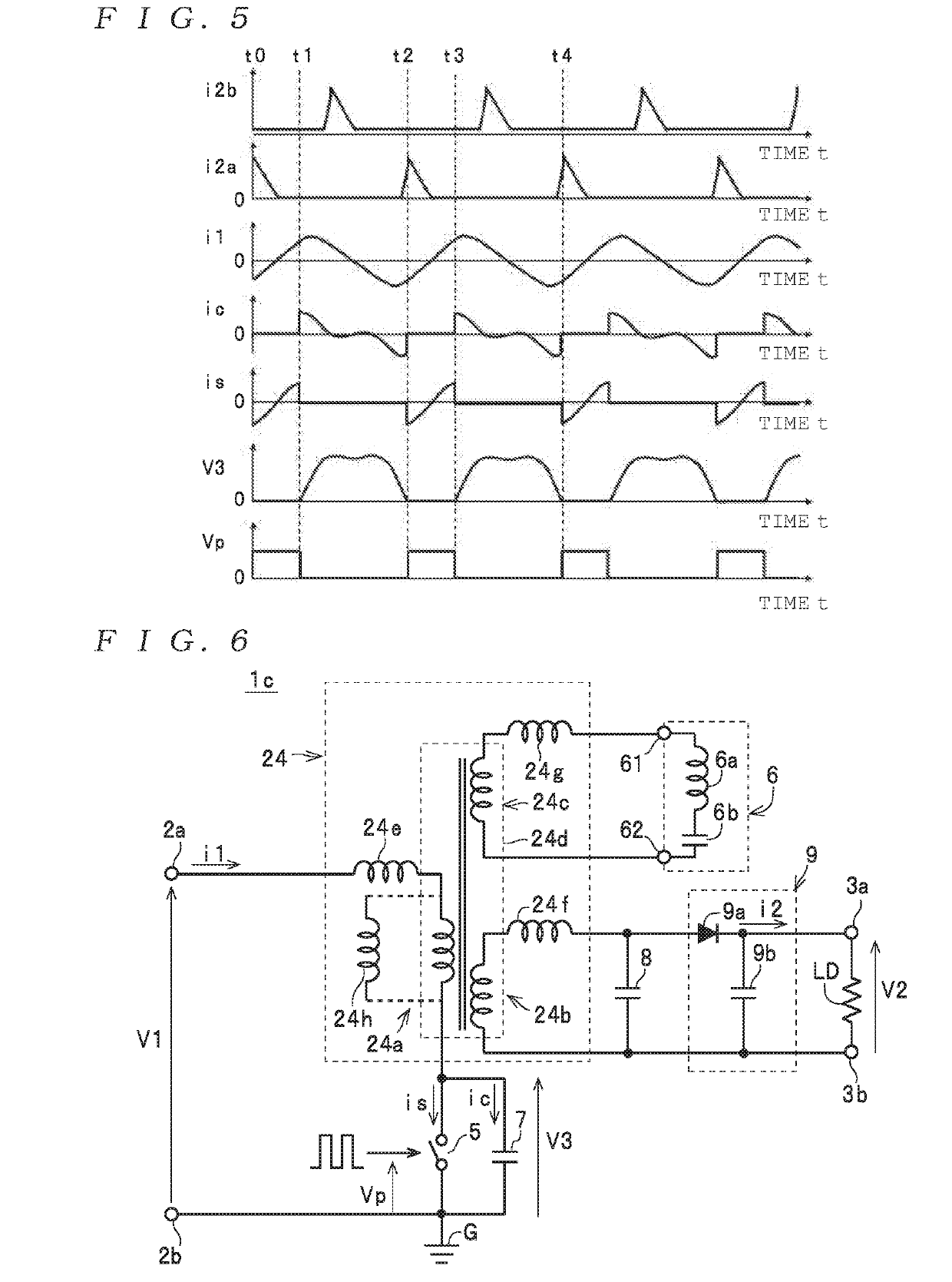Power converter
a power converter and converter technology, applied in the direction of electric variable regulation, process and machine control, instruments, etc., can solve the problems of increasing component cost, difficulty in producing a design that accurately and stably controls the on/off switching of the switch, etc., to reduce the derating factor of the voltage of the switch, reduce the conduction loss (or “on loss”), and increase the conversion efficiency
- Summary
- Abstract
- Description
- Claims
- Application Information
AI Technical Summary
Benefits of technology
Problems solved by technology
Method used
Image
Examples
Embodiment Construction
[0032]Several preferred embodiments of the present invention will now be described. Note that the present invention is not limited to the embodiments given below. The component elements described below include equivalent component elements and component elements that should be apparent to those skilled in the art, and such component elements may be combined as appropriate.
[0033]Preferred embodiments of the present invention will now be described in detail with reference to the drawings. Note that in the description of the drawings, elements that are the same have been assigned the same reference numerals and duplicated description thereof is omitted.
[0034]First, the overall configuration of a power converter according to a first preferred embodiment of the present invention will be described with reference to FIG. 1, with a converter 1a as one example of a power converter. The converter 1a includes a pair of DC input terminals 2a and 2b (hereinafter collectively referred to as the “...
PUM
 Login to View More
Login to View More Abstract
Description
Claims
Application Information
 Login to View More
Login to View More - R&D
- Intellectual Property
- Life Sciences
- Materials
- Tech Scout
- Unparalleled Data Quality
- Higher Quality Content
- 60% Fewer Hallucinations
Browse by: Latest US Patents, China's latest patents, Technical Efficacy Thesaurus, Application Domain, Technology Topic, Popular Technical Reports.
© 2025 PatSnap. All rights reserved.Legal|Privacy policy|Modern Slavery Act Transparency Statement|Sitemap|About US| Contact US: help@patsnap.com



